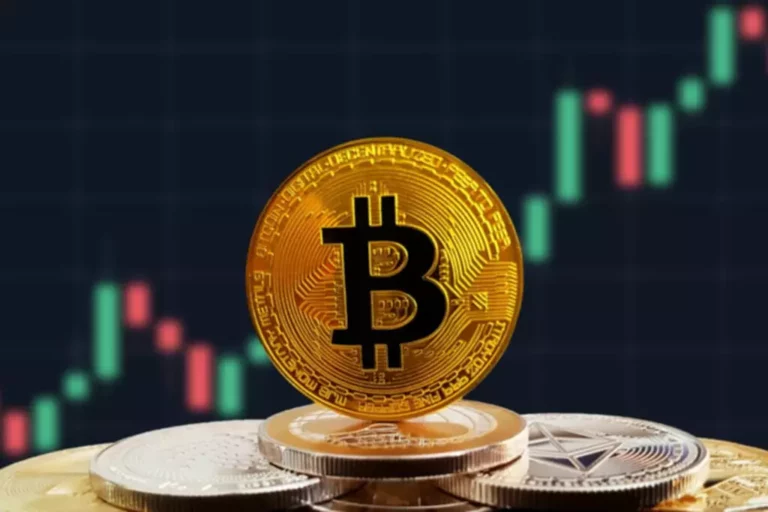Other than that, the platform offers competitive charges and has many different features and choices to discover. Now, permit me to be clear – the processes behind liquidity swimming pools are much more complicated than that. There are a ton of different options associated to these tasks, and every pool must be developed and programmed utilizing good contracts and advanced coding logic. A liquidity pool is a place the place you can lock up your money or a selected asset, for a set amount of time. Referencing the example given initially of this part, think about that you and your pal decide to throw your $100 payments right into a pot for per week – after per week, you want that cash for a brand new keyboard!
This is the automated pool response to the market needs, every little thing is self-regulated. After you begin shopping for Bitcoins along with your Ethereum in that pool, the pool begins dropping its Bitcoins and acquiring increasingly more Ethereum coins from you. With the Order Book, sellers will set the minimum value of the assets they need to sell, and buyers will set the maximum value they’re willing to pay for such assets.

AMMs present a mechanism for automated buying and selling and liquidity provision that considerably differs from traditional order book fashions. Discover how liquidity in crypto markets impacts market dynamics and trading methods, and the way liquidity pools work in DeFi. Sometimes, as a result of price fluctuations, the value of deposited tokens may be quickly decreased. This state of affairs is called impermanent loss, and it refers to when the worth of your tokens within the pool falls to be less than Proof of stake the worth of the preliminary deposit. There are multiple ways for a liquidity supplier to earn rewards for providing liquidity with LP tokens, including yield farming. A liquidity pool is a digital pile of cryptocurrency locked in a smart contract.
Crypto liquidity swimming pools are crowdsourced funds of crypto cash and tokens locked in a wise contract. These pools primarily facilitate automated and permissionless trading between cryptocurrencies and tokens on decentralized exchanges (DEXs). Unlike conventional exchanges that depend on order books, DEXs allow customers to swap one cryptocurrency for another by executing trades against a liquidity pool, which provides the necessary liquidity for the transaction.
Below is a deeper dive into how liquidity impacts merchants and methods suitable for each low and high liquidity environments. Impermanent loss happens when the prices of tokens in a liquidity pool change in comparability with when they have been deposited. The more significant the change, the greater the potential loss when in comparability with holding the tokens outside the pool. Market liquidity describes the power with which assets can be shortly bought or bought available within the market at stable costs https://www.xcritical.com/.
Step-by-step Information To Including Liquidity To A Dex
Unlike centralized exchanges (CEXs), DEXs do not require a trusted third party, or middleman, to facilitate the change of cryptoassets. Liquidity tokens, also referred to as LP tokens, are an important part of the mechanism of liquidity pools. These tokens are given to liquidity providers as proof of their contribution when they deposit their belongings into the liquidity pool. Essentially, these tokens are a declare on the belongings deposited into the pool. These funds are equipped by users often known as cryptocurrency liquidity suppliers, who deposit an equal worth bitcoin liquidity pool of two tokens (or sometimes more) to create a market. A liquidity pool represents cryptocurrency locked in a smart contract on a DEX (decentralized exchange).

In the decentralized finance (DeFi) realm, crypto liquidity pools have emerged as a cornerstone know-how, enabling seamless and efficient buying and selling of cryptocurrencies on decentralized exchanges (DEXs). These swimming pools serve as decentralized repositories of crypto belongings, managed by sensible contracts that automate asset pricing and facilitate transactions without the necessity for intermediaries. A liquidity pool is a collection of funds locked in smart contracts that enable DEXs to facilitate buying and selling without relying on traditional order books as we mentioned above.
- And throughout the years, as DeFi protocols have taken off, notable platforms have emerged that have not only used liquidity pools (like crypto swaps), but in addition cemented them as important to the crypto space.
- Liquidity pools replace this order e-book with a easy mathematical method that automatically determines the worth based on the ratio of belongings in the pool.
- Basic crypto liquidity swimming pools are usually two-sided, meaning they require two several types of crypto assets.
- When you’re able to withdraw your property, your liquidity tokens are burned (or destroyed), and in return, you receive a portion of the liquidity pool’s assets based mostly on your share.
Built atop the Cosmos SDK, Berachain is an EVM-identical layer-1 blockchain. It makes use of a novel “proof-of-liquidity” consensus mechanism, which aims to handle the restrictions of the proof-of-stake mannequin. Founded by pseudonymous developers, Berachain has raised more than $100 million to help propel its novel EVM-identical, proof-of-liquidity blockchain. When you first log in, click on Ask for Apps to request access to the Virtual Self-Certification application, for the company(ies) you could be submitting for. When that is approved, it is feasible for you to to access this utility in the My Apps menu.
Bitcoin Vs Monero: Evaluating Two Well-established Pow Protocols
AMMs could be quickly tailored to incorporate new tokens or change their pricing mechanisms via decentralised governance. Note that the liquidity of those markets can be fragmented throughout totally different exchanges, resulting in disparities in buying and selling circumstances and the potential for arbitrage. There are different types of liquidity swimming pools, and each one serves a unique objective. From classic Constant Product swimming pools to the versatile Hybrid Pools, each has features that appeal to completely different suppliers. But then got here Automated Market Makers (AMMs), which was proposed by Vitalik Buterin in a 2016 post. This marked a departure from order books and into liquidity swimming pools that depend on market pricing and algorithms, with one of the significant DEXs that popularized liquidity swimming pools being Uniswap.

Traders can then purchase or promote tokens from these swimming pools, which changes the steadiness of tokens in the pool and therefore, the price. Each trade incurs a small fee, which is added to the pool, rewarding liquidity providers. Unlike different liquidity swimming pools, this platform incentivizes its individuals or “keepers” to handle liquidations, buying and selling, lending and different operations. OIN Finance is a comparatively new and pretty secretive decentralized platform.
Namely, liquidity swimming pools allow decentralized exchanges to function, within the first place. When you come to trade on a DEX, and want to, say, sell your tokens, liquidity swimming pools allow you to do so – they maintain some of those tokens within themselves, and pay out the crypto that you actually want for the tokens. Well, in a very tough method, that is how DEXes – decentralized cryptocurrency exchanges – work. These change platforms permit users to commerce different crypto coins and tokens with out having to provide personal data to any specific, centralized institution. An AMM is a protocol that makes use of liquidity swimming pools to allow digital property to be traded in an automated method quite than via a standard market of buyers and sellers.











